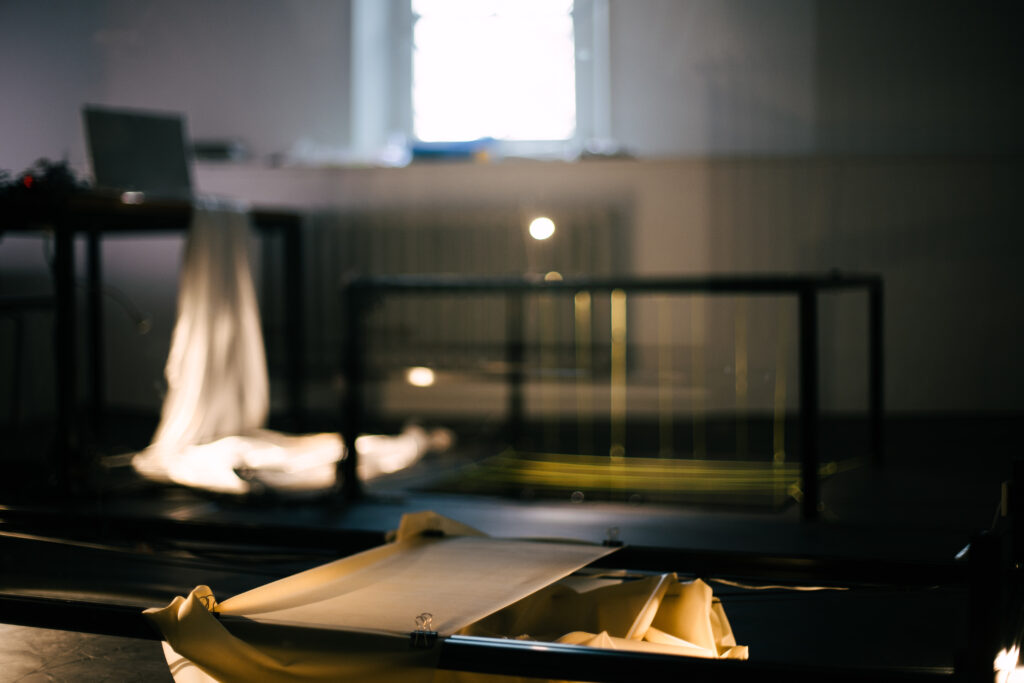
Research Residency by Irena Kukrić
The research centers around what we perceive as ‘present’, in a performance without human actors as intermediaries. As humans today so often relate to people who are not physically present and to media governed by code, how do we navigate (dis)embodied affects? Through the methodology of rehearsals and feedback loops, in an ongoing experimental situation, I look closely into the automated movements I work with.
In the Crystal Room residency, there were three cases that were observed.
Case nr 3
Latex attached to aluminum construction
180cm x 50cm x 20cm
The latex material is attached on the belts that are moved by 1 stepper motor in a continuous manner back and forth. As they reach the end of the construction the sensor attached to the ends sends the signal to the motor to reverse the direction.
Case nr 3 is an iteration of its previous version.
Case nr 1
Satin is attached to aluminum construction on one side and to the table on the other.
On the table is a sculpture to which the satin is attached to as it falls to the floor.
100cm x 80cm + sculpture 20cm x 30cm (wooden construction, covered with satin material, with an LED strip inside)
The satin material is attached on the belts that are moved by 1 stepper motor in a continuous manner back and forth. As they reach the end of the construction the sensor attached to the ends sends the signal to the motor to reverse the direction.
Case nr 1 is an iteration of its previous version.
Case nr 2
Grid of cotton stings attached to aluminum construction, metal coins, black plexiglass, soil
100cm x 100cm x 50cm
The grid of stings is attached on the belts that are moved by 1 stepper motor in a continuous manner back and forth. On the ends of the strings, metal coins are attached and move on the surface of the plexiglass. They move through the soil placed on the floor. As they reach the end of the construction the sensor attached to the ends sends the signal to the motor to reverse the direction.
Case nr 2 is an iteration of its previous version.
The automated movements, through their repetitive and pre-programmed nature, are seen as disembodied gestures, reflecting on the affects that arise in the relationship between humans and technology. Automation serves here as a way of entrapment, in an attempt to capture and track these affects. With the non-human elements, a defamiliarization with the human is created, as another way to perceive the dramatic experience of our being in the world in the age of the digital signals. What happens once we linger in these moments? Back and forth, in the automated movement as an ongoing rehearsal.
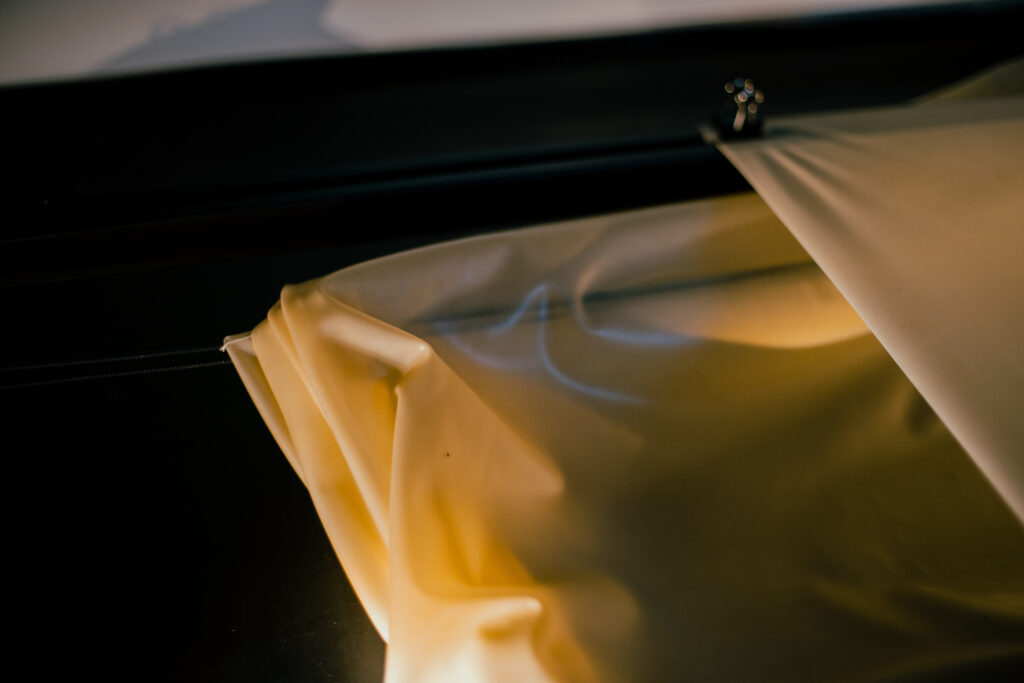
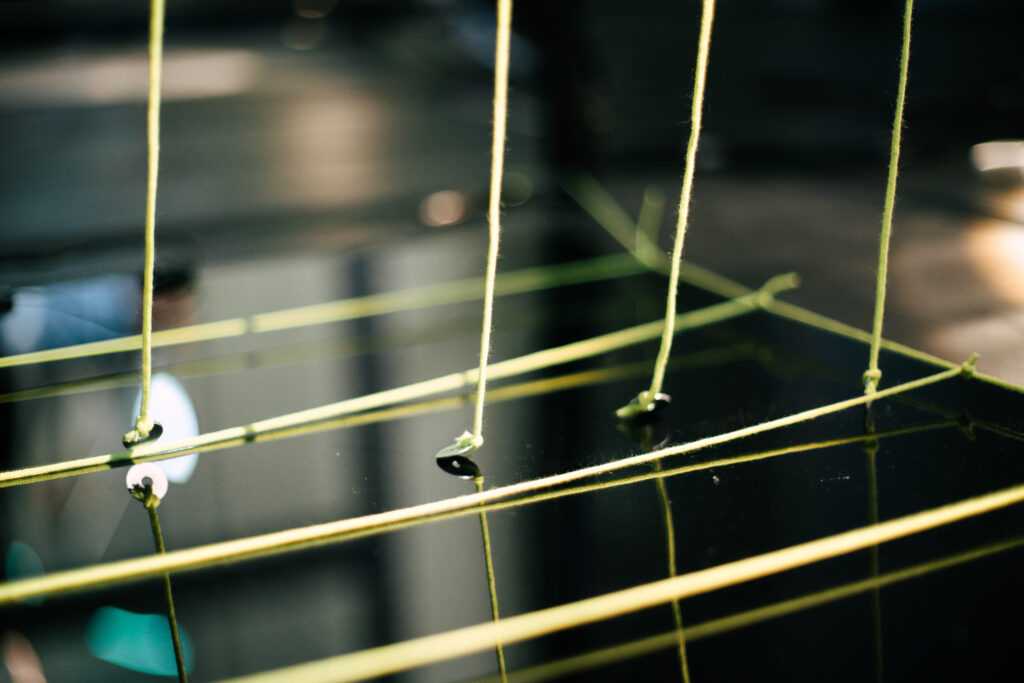
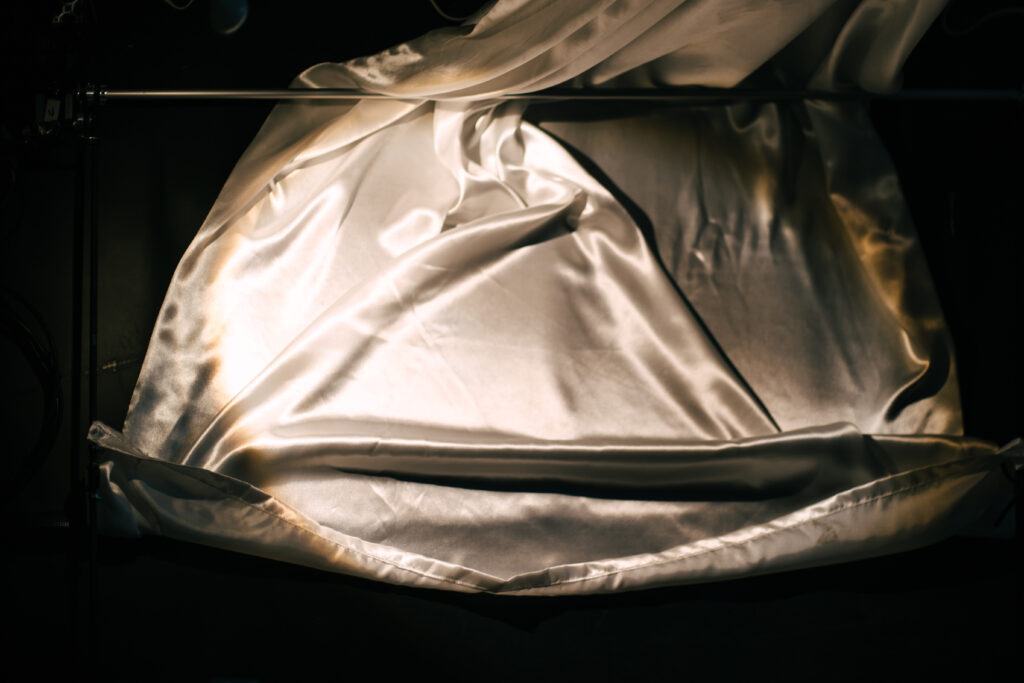
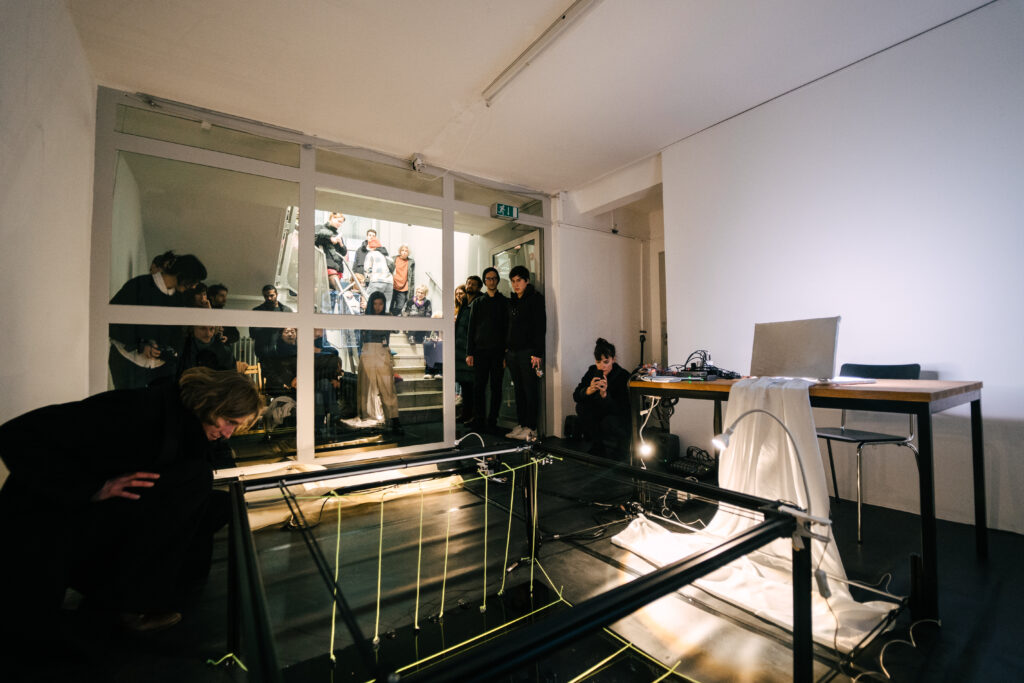
The residency is part of an ongoing practise based research between PhDArts in Leiden and HfK Bremen.
Photos by Jimmy Liu
Programming and electronics with Julian Hespenheide
March 2023